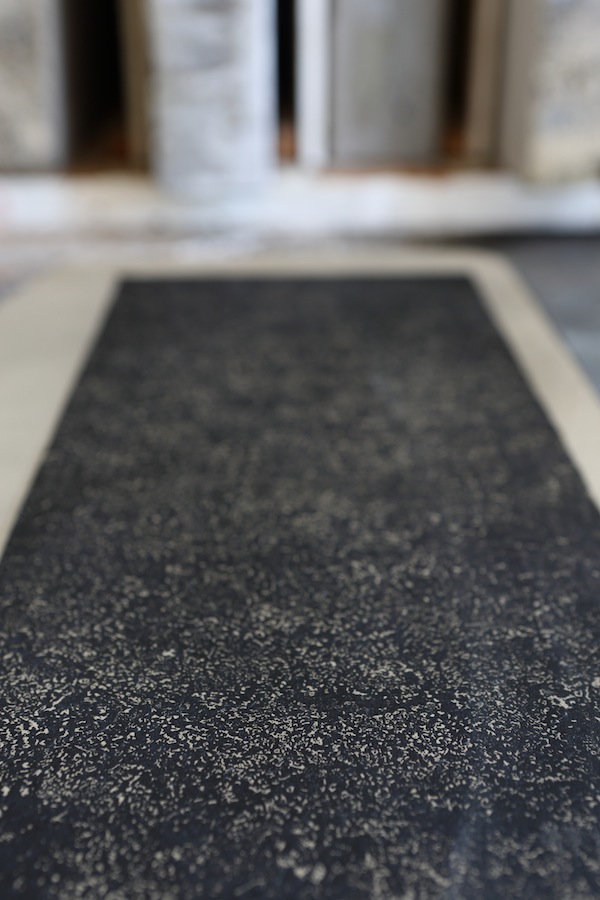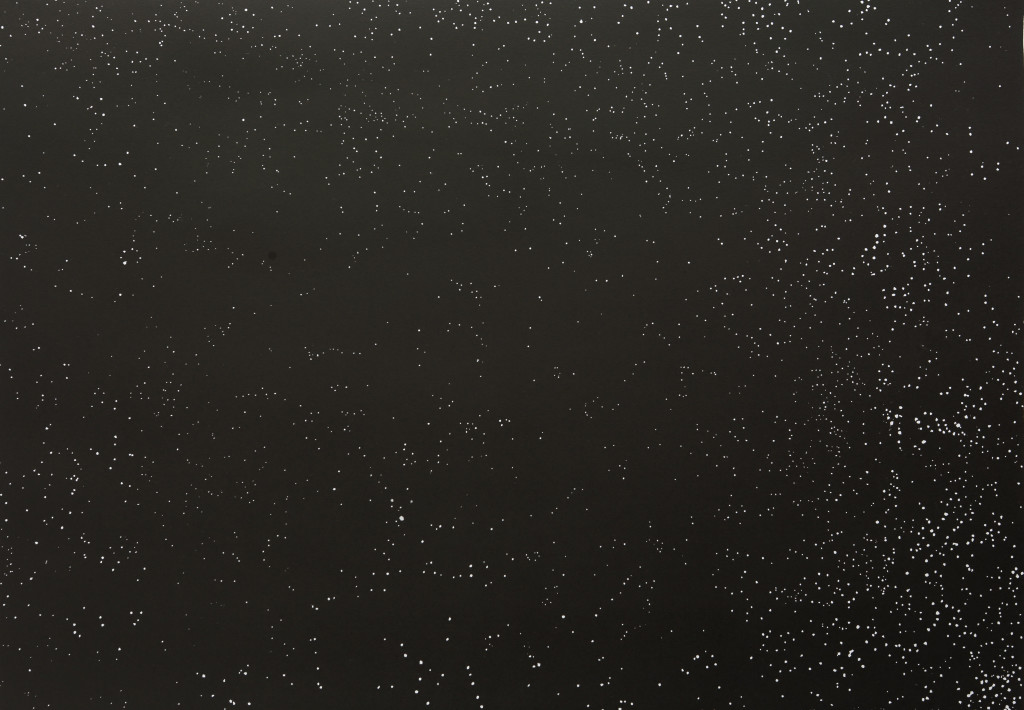Limestone lithographic prints, dimensions variable
2012-13

Stone Portraits, a series of lithographic prints, grew out of a print-research residency at Malaspina Printmakers. Two types of stones are typically used for lithography: limestone and marble. I chose to work with limestone because of my interest in its sedimentary calcification process, which has both a biological and a geological component: the microcrystalline calcite (micrite) grains in the limestone plattenkalk are made up of skeletal fragments of marine organisms. An historical narrative of the fossilization processes is thus effectively written onto the stone pieces.
Lithographic limestone often contains visible microfossils and mineral inclusions on the surface of the stone. These fragments are areas traditionally avoided by lithographers as they can flaw the drawn image. Working with several stones in Malaspina’s collection, I highlighted these marks and voided the rest (the “desirable” drawing surface), attempting to create a kind of imprint, or portrait, of the material, physical history of the stones.

In the summer of 2012, I traveled to Germany to several notably fossil-rich areas including Solnhofen in Bavaria, where the process of lithography developed. Although the stores of perfect limestone slabs for lithographic use have mostly been exhausted, quarries still operate in the region, where the stone is used primarily for construction and as high-end domestic tile. I visited quarries that were open to the public, digging for fossils and researching the material properties of the stone

Most lithographic limestone plates come from Solnhofen, and the stone in this region is ideal for lithography because of its finely grained, dense layers. These qualities also facilitate the fossilization of larger creatures; Solnhofen is home to some of the most complete and detailed Jurassic Period fossils in the world: soft-bodied creatures like cnidarians (jellyfish, sponges), smaller marine creatures like fish and ammonites, and spectacular, near-complete archaeopteryxes and pterosaurs.







Special thanks to master printmaker Jocelyn Barrable Segal for her guidance, assistance, and unfailing patience with this project.